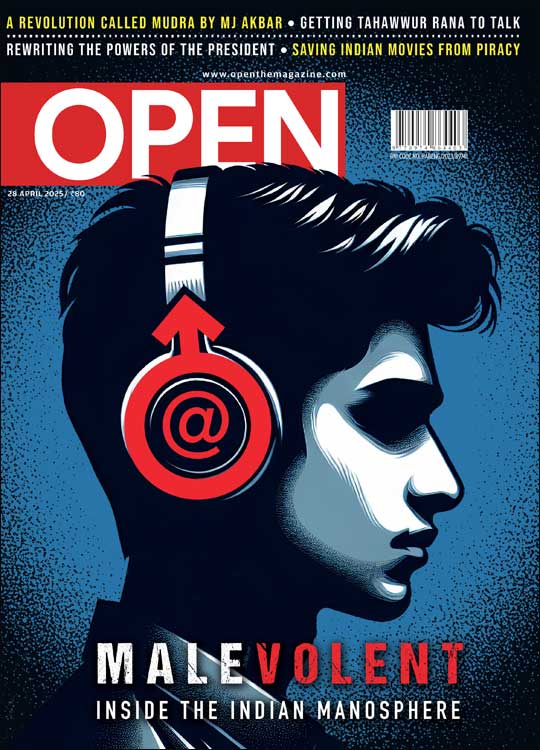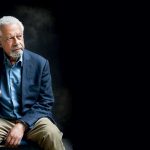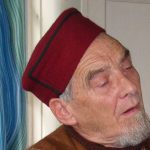How BHU Changed My Life
Professor BN Dwivedi reflects on the values of the founder of Banaras Hindu University, Madan Mohan Malaviya, and what he has learnt from his long association with the 100-year-old institution
 Prof BN Dwivedi
Prof BN Dwivedi
 Prof BN Dwivedi
|
03 Feb, 2016
Prof BN Dwivedi
|
03 Feb, 2016
/wp-content/uploads/2016/03/20682.jnu1_.jpg)
Responding to the honour by his own alma mater IIT (BHU) on 30 December 2015, Mr Manoj Sinha, one of its illustrious alumni and presently MOS Railways, paused for a while in a deep thought. Why can’t it become a leading light in the ‘world-ranking’ of the institutions as its great founder Bharat Ratna Pt Malaviya visioned? Yes, it can.
We were hostel mates in the mid 1970s. Both of us came from a village. We are always wonder-struck if the BHU campus were not the heaven what it would be like? BHU’s sweet-smiling scenic beauty, embedded in an ever green lovely garden with academic fragrance, has no parallel on this planet. When I was a research physicist at UCSD in the early 1980s, my interaction with the Nobel Laureat Hannes Alfvén used to be rewarding, thought-provoking and inspiring. Notwithstanding academic and material gain in place, I decided to return partly because of my father’s insistence, and largely because of my own indebtedness to this institution of ‘light and life’ with a resolve to make a difference. Since then, I have been exploring/travelling widely collaborating/visiting/lecturing at premier institutes around the globe. Based on my personal experience, I can assert that we do have potential to become a world-ranking institution today if we follow Pt Malaviya’s vision and scientific temper in modern perspective.
Wake up an Indian at midnight and say ‘Madan Mohan Malaviya’, he would say ‘Banaras Hindu University’ (BHU). An ordinary man with extraordinary vision, Pt. Malaviya was a celestial light. His manifold services to the nation in his pure, serene, simple, and selfless life are beyond measure. He was an educational pioneer, a silver-tongued orator, a national leader, a four-time Congress president, a social reformer, a religious leader of highest secular order, a model of lofty-minded integrity, a fiery journalist/editor, and above all a great patriot. His stature as the subcontinent’s greatest creative genius has been re-emphasized recently by recognizing him posthumously with the highest national honour of the land ‘Bharat Ratna’.
Pt Malaviya’s immortal monument is his creation of a temple of learning at Varanasi. His vision is embedded in its unique temple-tower architectural layout and its content: a magnificent silhouette against the Gangetic sky at dawn with gothic pillars. His vision was to dispel any ignorance from the motherland, and his ambition was to rekindle the ancient fire of knowledge and virtue that had illuminated this land of Aryans in the distant past. He thought of a fusion of the country’s ageless sublimity with modern science and technology to make India happy and contented. Banaras Engineering College (BENCO) started as early as January 1919 with Prof Charles A. King as its Principal. Soon thereafter, its power house was built and a 20 KW set (200 V DC) installed in 1921 which was augmented by a 100 KW set in 1923.
On 4 February 1916, Lord Hardinge laid the foundation stone of BHU. “Let it be our prayer that this stone may contain within it the germs of all that is good and beautiful and wise for the enrichment of the educational system of India, the enlightenment and happiness of her people, and the glory of God.”, said Lord Hardinge. A series of lectures by a galaxy of eminent people followed thereafter during 5-8 February. This included Mahatma Gandhi, Mrs. Annie Besant, J. C. Bose, P. C. Ray, C. V. Raman, Sam Higginbottom, Harold Mann, Kaviraj G. Sen, P. Geddes among others. C.M. Sogani did his D.Sc. from BHU in 1928 under the supervision of C.V. Raman, who was an Honorary Professor of the university.
Pt Malaviya proclaimed, “I am establishing a University, which will combine ancient wisdom with the knowledge of the physical sciences and technology.” Since ancient time, we had the legacy of the ashrams of rishis, the forest universities, the Gurukulas, the universities of Takshashila and Nalanda. Chinese piligrim Hiuen Tsang studied at Nalanda in the 7th century A.D. Pt Malaviya conceived of a university with a blend of ancient Indian traditions with modern universities in the west giving courses in arts, science and technology. He wished to achieve all this in a residential university to which Lord Hardinge observed, “But, whether the idea of a residential teaching university be new or old, there is no doubt that it is a departure from the existing model, nor is this the only departure that characterises this enterprise.”
In order to invite distinguished scholars working abroad, and to enrich academic environment of the university, Pt Malaviya used to have frequent correspondence with eminent scientists like Ernest Rutherford, Sir Arthur Eddington and others. With his wide personal contacts, Pt Malaviya would frequently have eminent visitors to his university like Arnold Sommerfeld (German theoretical physicist), C.V. Raman, Rabindranath Tagore, Ashutosh Mukherji, Sir M. Visvesvaraya and others.
Pt Malaviya was personally opposed to the non-co-operation movement by the Congress under Gandhiji’s leadership, although he was, at heart, not only sympathetic but also helpful in many ways to those who took part in it. The University had already decided to confer the first Honorary Degree of Doctor of Letters onto His Royal Highness the Prince of Wales in the Special Convocation scheduled on 13th December 1921. The Prince of Wales had two-fold duties to perform at BHU. The first one was to declare the University buildings open, and the second was to receive the honorary degree of Doctor of Letters. Both these functions went off gracefully in true spirit of अतिथि देवो भव (Atithi Devo Bhava).
Pt Malaviya would always take a round of the campus in the evening, and even late in the night. Seeing some students working with their professor in the night would make him very happy. Dressed in immaculate white, he was a unique emblem of purity, spotless and flawless national leader. With regard to students’ participation in active politics, he raised a powerful voice against the cult of ‘close your books’. To him, it was a synonym to closing one’s mind. That is how Pt Malaviya planted the sapling of knowledge in Kashi. And that is how he nourished and nurtured it until his last breath.
From ancient time, it is the natural curiosity of ‘what, why, how and when’ of the natural events that drive men/women to become scientist. From Aryabhata in the 5th century to Bhaskara in the 11th century, India was on top of intellectual scene. This spirit was revived in the 20th century. S. Ramanujan, J.C. Bose, M.N. Saha, S.N. Bose, C.V. Raman and others asserted their intellectual potential in science. After our Independence, many new institutions of academic excellence were established. And, it is gratifying to note that the BHU graduates have been playing a prominent role in shaping modern India.
Banaras has been housing divine men, women and teachers of humanity since time immemorial. Continuity of life mirrors here: a dip in the holy Ganges sanctifies both life and death. The blend of Vedavyaas, Gautam Buddha (he gave his first sermon at Sarnath and set in motion the wheel of Dharma), Shankaracharya, Kabir and Tulsi reverberates everywhere in this holy city of Lord Shiva. Pt Malaviya was a natural descendant of the great teachers and sages of India. He followed the teachings of Lord Krishna as narrated by Vedavyaas, “Awake, arise and engage yourselves unceasingly and dauntlessly in works leading to prosperity, with the firm faith that success shall crown your efforts.”
Many slogans such as ‘Freedom is our birth right’ by Tilak, ‘Do or Die’ by Gandhi, ‘Jai Hind’ by Bose, ‘Inquilab Zindabad’ by Bhagat Singh, just to name a few, inspired and ignited Indians to fight for our freedom. Majesty of Pt Malaviya, however, lay in his truthfulness with a thumb imprint of King Harishchandra. In his presidential address at the Lahore session of Congress in 1909, he declared, “It is righteousness alone that wins.”, and summoned: “Be truthful, be humble”. Thus, he symbolized and popularised the slogan ‘Satyameva Jayate’ (Truth Alone Triumphs), a well known mantra from the Mundakopanishad. This became the Emblem of India with tagline phrase ‘Satyameva Jayate’ after our independence (inscribed in Devanagari script at the base of the national emblem, adapting from the Lion Capitol of Ashok placed at Sarnath museum in Varanasi).
Pt Malaviya always helped and encouraged a teacher or even a student, striving to extend the frontier of knowledge in his subject. To do so, he often cut across bureaucratic hussle, technical objections and narrow-minded groups in the university. Handing over BHU to Sir Servapalli Radhakrishnan in 1939 speaks of his strong belief that devoted eminent scholars should head the education administration. He visioned a broad-minded, tolerant, and universal religion as the foundation of education. He built and nourished a unique crescent-view university at the Ganges as a centre of excellence in every branch of human knowledge. It is not just bricks and stones that an institution make. It is, indeed, a blend of excellence and dedication by exceptional and capable individuals that glorify it.
Pt Malaviya always maintained, ‘rules are made for man and not man for the rules’. Spirit of tolerance and accommodation embedded in idealism and realism (gyan-vigyan) reflected both in his action and in his speech. Preserving the imperishable treasures of ancient values, Malaviya moved forward with time. For the first time in India, he established departments of mechanical and electrical engineering, glass technology, pharmaceutical chemistry, mining and metallurgy. At the same time, he introduced subjects like ayurveda, indology, ancient Indian culture and higher Sanskrit learning to bring about the synthesis of best of the east with the advancement of science of the west. He always had his eye on the brilliant scholars working in India and elsewhere. Accordingly, he had the services of Jadunath Sarcar, Rakhal Das Banerji, U.C. Nag, Charles A. King, A.B. Dhruva, Ganesh Prasad, Birbal Sahni, R.S. Inamdar, S.S. Bhatnagar, V.V. Narlikar, R.K. Asundi and others, to guide the students and to inculcate in them the spirit of research.
Vice-Chancellor/Rector of his own University, a spotless and flawless religious leader of highest secular order, Malaviya was aptly called as ‘Devata Purush’ (a man of God) by Mahatma Gandhi. With purity in his expression and divinity in his look, he would always summon, “Practise truth and do your duty.” Malaviya’s vision was to generate national spirit through the power of education and righteousness, achieving the economic development of the country by combining the teaching of science and technology with that of religion. The Banaras Hindu University was built and nourished by him out of contributions from beggars to princes, so it is truly a people’s university. This ‘Temple of Learning’ glorifies a unique blend of academic excellence and dedication. Pt Malaviya viewed the excellence in science and technology with the presence of Bhatanagar and Narlikar in his dream campus. The BHU Kulgeet (alma mater song) was composed by Dr. Shanti Swaroop Bhatnagar, one of the most renowned scientists, who was a Professor in Chemistry at BHU for three years during 1921-1924. Bhatnagar is and will be remembered with reverence till this Univresity exists. Pt Malaviya, said S. Radhakrishnan, ‘has lighted a lamp here whose light will penetrate far into space and will not put out, by God’s grace, as long as civilization lasts’.
The university is celebrating its centenary year from 24 January 2015 ‘Vasant Panchami’ to 12 February 2016 ‘Vasant Panchami’. Recalling today as to how Bharat Ratna Pt Malaviya organized this historic event in 1916 is refreshing and telling for the young generation of the BHU fraternity. This reminds us of our rich tradition and the very fact that we did not live like the proverbial frog in the well even under the British rule. Pt Malaviya’s vision surpasses all imaginations. It was his foresight to establish BHU as an outstanding, broad-based University. This ‘National Temple of Learning’ has moulded generations of very eminent educationists, scientists, technologists, economists, artists, doctors, jurists, and prominent leaders, who have immensely contributed, and have been contributing to the development of our nation.
In the pre-independent era, pioneering contributions by J.C. Bose, M.N. Saha, S.N. Bose, C.V. Raman, S. Ramanujan were globally commended. While discovery of Raman effect brought Nobel Prize, Saha’s ionization formula is key to understanding stellar astrophysics, Bose-Einstein statistics is a milestone in quantum statistics, JC Bose in physics and physiology (a pioneer in microwave optics technology). In the post-independent era, we have progressed impressively well in the areas of space, radio astronomy, biology, pharmaceutics, information technology etc. But does it meet the level of scientific achievements in the pre-independent era? It is encouraging to note, however, the success of Chandrayaan-I and Mangalyaan-I missions that brought us a sense of pride. As an MSc student at BHU in 1951, Bharat Ratna CNR Rao recalls how he gained fresh insight interacting with his teacher Prof SS Joshi, and published his first research paper in 1954. Many more can be cited.
On a personal note, I was one of the nine short-listed candidates for the BHU VC by a three-member Search Committee headed by Prof. G.K. Chadha and invited me, when I was on a research visit to the Max-Planck-Institute in Germany, for a face-to-face discussion with it on Saturday, 25th June, 2011 in the office of Vice-Chancellor, Jawaharlal Nehru University (JNU). The Search Committee had gone through the CVs of a very large number of eminent academicians, including current and former Vice-Chancellors and scholars of international repute. Cutting short my research visit, I decided to come. My ~ 45 min interaction with Profs. Chadha, Barma and Sopory at the JNU VC office centred around, “The university needs a VC with strong academic values and presence.” I explained before the Committee my standpoint, “The university needs an honest VC with strong academic values and presence in order to restore its past glory.”
Briefly speaking, my viewpoint was underlined as: “Universities have a profound role to play in generating knowledge, as well as transmitting that knowledge from one generation to the next. The responsibility to do this rests squarely on faculty members. At world-ranking universities abroad, it is clear that university teachers have a profound role to play in enriching the lives of those they teach. And what is taught must stand up to the scrutiny of the students. It is good quality research that makes the faculty acceptable to the system. In a temple of higher learning, the understanding should be enlightened and the character enriched. These virtues need to be given top priority. And the university campus in the post-independent era must return to a place where virtues of discipline and non-violence, should be written as with a sunbeam on everyone’s mind, let alone students. We must come to appreciate the intuitive knowledge of our ancients to derive some fundamental lessions. The knowledge acquired from teachers or from books is at most repetitive, imitative and derivative. Therefore, there seems to be an urgent need to help/encourage anyone committed to scientific pursuit even in this grim, rat-race societal scenario. And it can be accomplished by exceptional individuals.”
Pt Malaviya’s manifold services (crowded with achievements both noble and notable) to the nation was great but he himself was greater than his achievements. Taking down his vision with scientific temper in modern perspective, advancing forward on his footprint, and keeping the BHU ‘Madhur Manohar Ateev Sundar’ (So sweet, serene, infinitely beautiful. This is the presiding centre of all learning…) will be a befitting tribute to Pt Malaviya, introspecting 100 years of his University. Let us resolve and celebrate Bharat Ratna Mahamana’s BHU centenary year by practising his vision in toto in order to rightfully make its richly-deserved place in the world-ranking Institutions in the present day and age. And it is no longer a dream because it is Pt Malaviya’s centre of light and life.
About The Author
CURRENT ISSUE
MOst Popular
3

/wp-content/uploads/2025/04/Cover-Manosphere.jpg)











More Columns
‘Colonialism Is a Kind of Theft,’ says Abdulrazak Gurnah Nandini Nair
Bill Aitken (1934 – 2025): Man of the Mountains Nandini Nair
The Pink Office Saumyaa Vohra